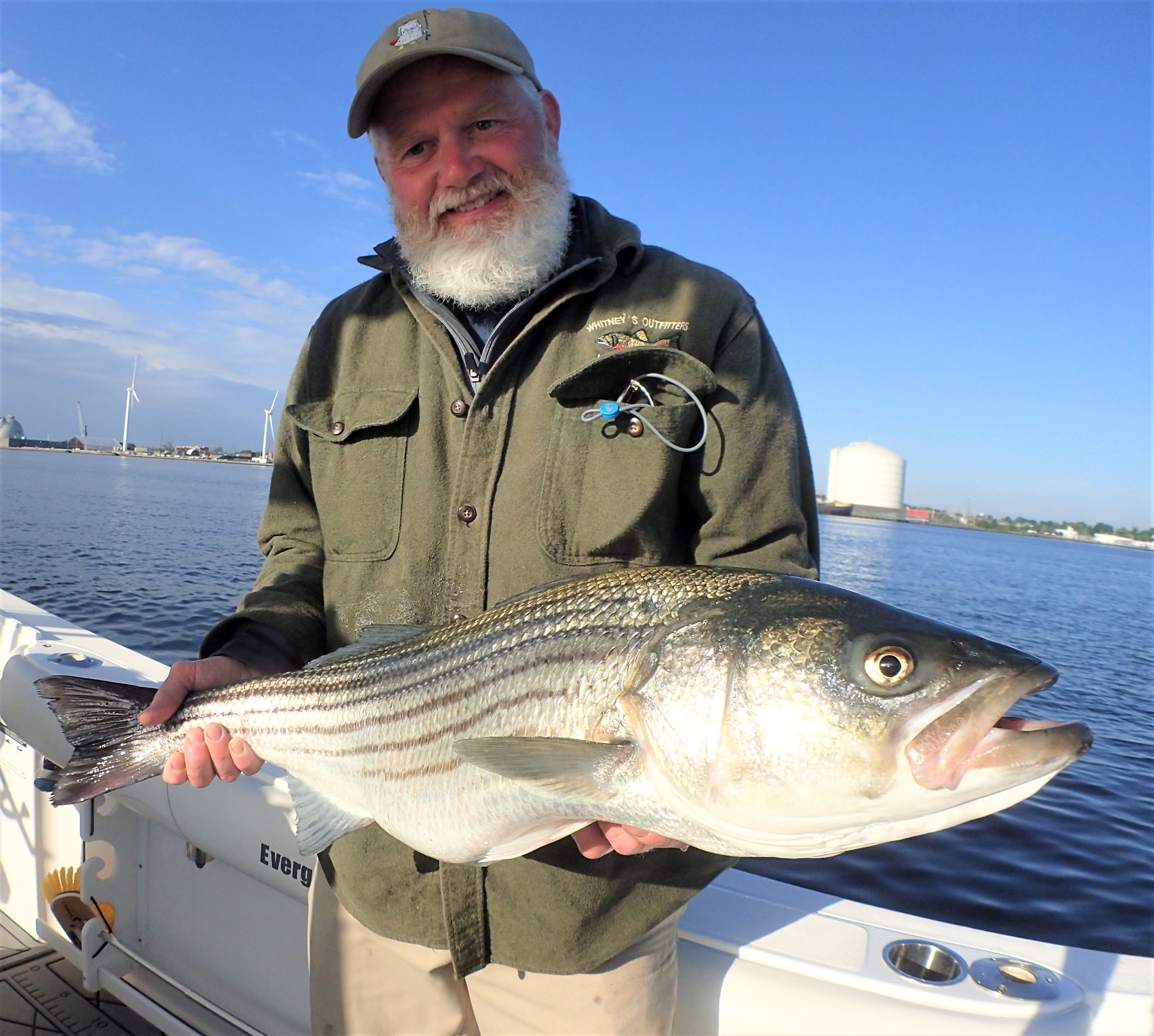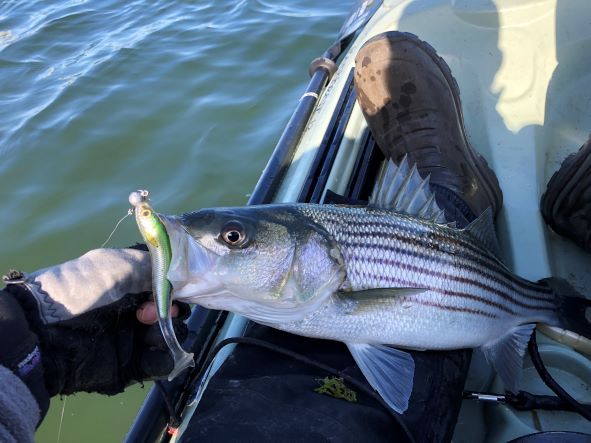LEVERAGE FURIOUS FEEDING FOR SPRING STRIPER FUN

Two common road trip questions: “Are we there yet?” and “When can we eat?”
Striped bass aren’t so different and when the northeast run is in full swing, the latter inquiry rings constant in their minds. While some “holdover” fish remain in local ponds and protected waters with sufficient forage for the winter months, this region starts to see the bass brigade around mid to late April.
“It is the event of the year,” said South Kings Town, R.I. angler Todd Corayer. “A lot of people get excited about the opening day of trout season, but the anticipation for stripers to migrate up the coast is pretty sensational.
“It’s all people talk about for weeks — if someone has seen one or if someone has heard of one, or where they are (on their migration route). It’s all people think about, especially after a long winter.”
As Corayer explains, the stripers depart their wintering spots in Chesapeake Bay and the Hudson River, then follow the coastline up though Long Island Sound and disperse throughout the New England region. Running close to the beach, the fish are accessible by center console boaters, kayakers and land-bound anglers.
“The fish will come in pretty close, so there’s a decent shore fishery,” Corayer said. “Kayakers are all over them (in the early part of the season) because those stripers will go up into the salt ponds looking for river herring. Wherever there’s a herring run, the stripers will follow them on a straight line into the freshwater (reaches of coastal rivers)."
Pointing out a timing indicator, Corayer said: “The season is dictated by the pattern of the migration. The old timers will tell you that you don’t get stripers until you have flowers on the shad bushes. Depending on the winter, by the first of May, we usually have the first waves of bass coming through the Rhode Island area.”
Like travelers looking for a restaurant, the stripers plot their course primarily on the heels of menhaden and squid schools. Driven by appetites built through winter’s leanness, the fish arrive ready to gobble just about anything they can catch.
Trolling live menhaden is a proven technique, as is “chunking” — fishing chunks of menhaden on an 8/0 Mustad Demon Perfect Circle hook with a fish finder rig. However, Corayer likes the cleaner, more efficient artificial route.
“Since they’re (largely) on menhaden, matching this pattern is important,” Corayer said. “Topwaters with that big popping, wounded fish action are very (productive). Most guys will fish articulated swimbaits for the middle of the water column.”

Soft plastic squid baits on 1/4- to 1/2-ounce Mustad lead heads will earn plenty of attention, as will the LIVETARGET Menhaden Swimbait. Corayer is particularly fond of the LIVETARGET Slow-Roll Shiner or the LIVETARGET Twitch Minnow on a light jig head.
“The key for them is that the shape and action of these baits are more true to nature,” Corayer said. “I’m a firm believer that you can put all the holographic images you want on a (bait), but these migratory fish are hungry — they’ve come hundreds and hundreds of miles.
“I believe they’re more keyed in to the shape of a plastic and action, as opposed to a lot of intricate colors. This is why I think the LIVETARGET baits do so well, because their action is true to nature.”
As Corayer points out, feeding bass like to use eddies and hard structure edges as feeding positions, so they don’t get much time to examine a passing bait. Therefore, lures like the LIVETARGET swimbaits, shiners and minnows show them something they instinctively recognize as food.
Closing tip: Corayer acknowledges the feeding influence of moving tides, but he advises anglers not to discount slack water. This dead period is when nature resets the table, as baitfish and predators reposition for the next period of movement.